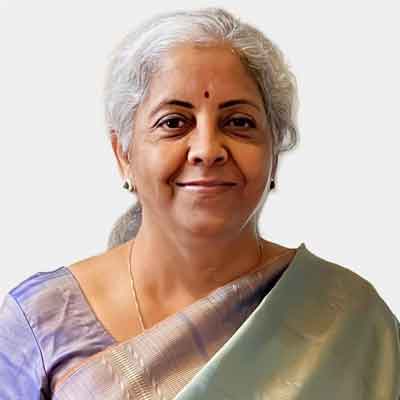Finance Minister Nirmala Sitharaman has announced the creation of an Urban Infrastructure Development Fund (UIDF) in her most recent budget statement. This fund will be administered by the National Housing Bank and will be used to build infrastructure in Tier-2 and Tier-3 cities. Banks are required to contribute to the UIDF from the shortfall in lending to prioritised sectors. While it is encouraging to see Tier-2 and Tier-3 cities receiving attention, three issues must be resolved to provide sustainable finance that advances climate-resilient infrastructure.
The amount of investment is the first obstacle. Urban infrastructure investment needs in India are estimated to be between $500 billion and $1.2 trillion. Although these figures seem intimidating, they also show that there is room for creativity and the exploration of new financing options.
The inadequate utilisation of the existing funding is the second obstacle. Urban infrastructure in India is increasingly funded by national programs and schemes rather than municipal revenues. Urban local bodies (ULBs) not increasing their own revenue and an increasing proportion of central and state grants in municipal finances may be the causes of this. Despite the fact that funds were available for urban infrastructure projects and there was a pressing need to raise service standards, municipal expenditure as a percentage of GDP decreased from 0.82 percent in 2010-11 to 0.78 percent in 2017-18.
Between 2010-2011 and 2017-2018, more than 20 per cent of ULBs' revenue remained uninvested, resulting in a pan-India surplus. Concern has also been expressed regarding the inadequate use of funds provided by national programs like the Smart Cities Mission and the Atal Mission for Rejuvenation and Urban Transformation (AMRUT). Projects completed under AMRUT account for 42 per cent (Rs 327.930 million) of the total allocation as of December 2022. As a result of the Smart Cities Mission, only 31 per cent of all completed projects had a value of Rs. 599,580 million as of March 2022.
The shortage of city-level bankable projects is the third obstacle. The limited absorptive capacity of ULBs has frequently been cited as the reason for the underutilization of scheme funds. The cities' inability to prepare a pipeline of bankable projects has also been largely to blame for the restrictive borrowing and exploration of public-private participation (PPP) for the development of urban infrastructure. In the case of smaller and medium-sized cities, this issue is exacerbated even further.
Due to inadequate project development, the absence of a bankable pipeline, and the high costs involved in the initial stages of project development, urban infrastructure projects frequently cannot be financed through debt or private sector financing. Cities should look into innovative public and private financing options for climate-resilient infrastructure because of the need for localized climate action planning.
ULBs would be required to prepare bankable investment projects and demonstrate the capacity to execute projects within specified durations before banks would consider financing urban infrastructure projects through the UIDF. While many ULBs need money to pay for infrastructure projects, they don't have the ability to make a capital investment plan or decide which projects should be prioritised. This becomes even more difficult when cities are required to incorporate pressing climate, gender, and equity considerations into the design of their projects. These essential requirements have become commonplace when cities are trying to obtain funds from bilateral and multilateral development banks.
If India were to fund 20 per cent of its urban infrastructure funding needs through PPP or debt, approximately 250 commercially viable infrastructure projects would need to be ready for implementation. Following that, the projects must make available detailed project reports (DPRs) that outline the project's scope, specifications, and costs, as well as action points to address any potential impacts on the environment or society that may be associated with them. It is essential to assist cities with project development efforts in order to optimize for cost and efficiency, given the high costs associated with project preparation and the difficulty of using standard templates in smaller and medium-sized cities.
To address these issues, a national-level Project Preparation Facility (PPF) that supports the entire project cycle's value chain could be established to create a pipeline of projects that can attract private financing. The facility could be housed in the Ministry of Housing and Urban Affairs (MoHUA), which would make it easier for Tier-2 and Tier-3 cities to access UIDF funds. Pre-feasibility or feasibility studies, designs, environmental and social impact assessments (EIAs) and project structuring typically account for between 2 and 10 percent of the project's total cost, depending on the scope and industry. Under ongoing missions like AMRUT, MoHUA could set up a revolving fund at the facility to fund project preparation and early-stage support and achieve financial closure.
Cross-disciplinary professionals would be needed at the facility to assist Tier-2 and Tier-3 cities in developing climate resilience and gender equity, disability, and social inclusion (GEDSI) projects for various sectors. This facility could also be used to vet various city projects selected through national missions and programs. Cities would be able to use the funds provided by existing missions as gap funding for projects or to improve the financial viability of current and upcoming projects thanks to this.
By providing a record of successful projects, the facility would, in the long run, contribute to ULBs' improved creditworthiness. Cities may also be able to maintain and publish disclosures on a regular basis when they are able to access funds under the UIDF. In order to establish a virtuous cycle of sustainable financing for infrastructure development, this track record of projects and financial management would be helpful in informing private investors of investment opportunities in Tier II and Tier III cities.





















